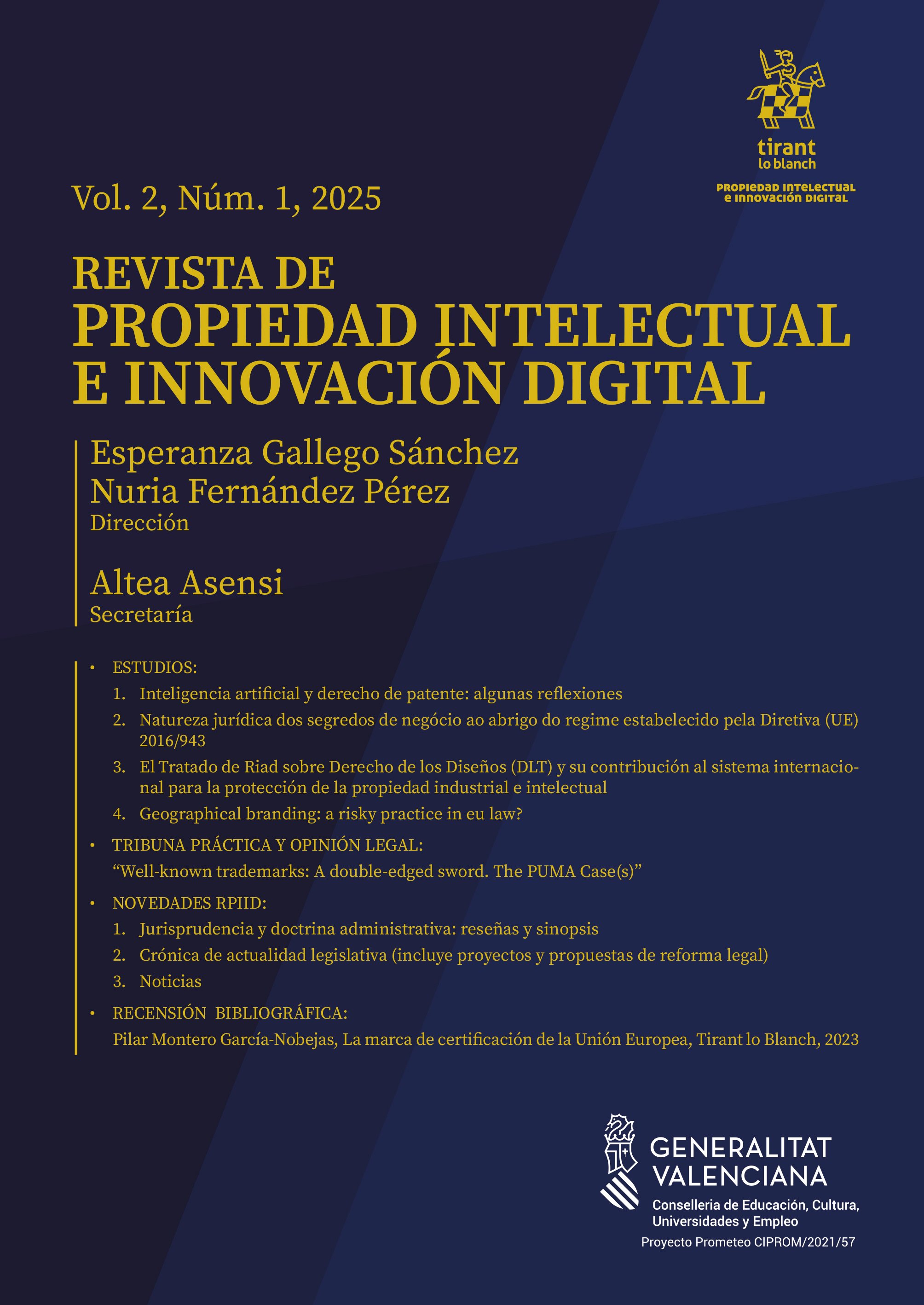“Well-known trademarks: A double-edged sword. The PUMA Case(s)”
DOI:
https://doi.org/10.36151/RPIID.2025.2.1.05Palabras clave:
Well-known trademarks, reputation, dilution, link, Article 8(5) EUTMR, PUMAResumen
In the dynamic world of commerce and branding, well-known marks serve as powerful beacons of identity, trust, and quality. These marks, recognized and revered globally, carry immense value and influence, often becoming synonymous with the products or services they represent. However, their prominence also renders them double-edged swords. On one hand, they offer unparalleled advantages in market penetration, consumer loyalty, and brand equity. On the other hand, they expose brands to significant risks, including counterfeiting, dilution, and complex legal challenges. This dual nature necessitates a nuanced understanding and strategic management to harness their benefits while mitigating potential drawbacks. By navigating these challenges effectively, brands can maintain their integrity and continue to thrive in a competitive marketplace. In this article, we will delve into the notion of notoriety and discover challenges and opportunities of managing well-known trademarks, with a particular focus on the Big Cat: PUMA.
Referencias
Coke Lore: Trademark Chronology (coca-colacompany.com)
History | PUMA®
Basma D., (2021) Dilution Versus Unfair Advantage: Myths and Realities. IIC 52, 1217–1257, https://doi.org/10.1007/s40319-021-01116-z.
Beebe B., (2006) A defence of the new federal trademark anti-dilution law. Fordham Intell Prop Media Entertain Law.
Directive 2008/95/EC17 of 22 October 2008 to approximate the laws of the Member States relating to trademarks, which codified Directive 89/104/EEC of 21 December 1988 (as amended Community Trade Marks (CTMR).
Directive (EU) 2015/2436 of the European Parliament and of the Council of 16 December 2015 to approximate the laws of the Member States relating to trademarks.
Dornis T., Wein T, (2014) Trademark rights, comparative advertising, and the ‘‘perfume comparison lists’’—an untold story of law and economics. Inst. für Volkswirtschaftslehre 3, 4. The fashion law, ‘‘LV & the danger of over-exposure’’ (Fashion Law, 2013). http://www.thefashionlaw.com/?p= 1358. Accessed 16 Oct 2019.
EUIPO Boards of Appeal Case-law Research Report, “The link between the trade marks (Article 8(5) EUTMR)”, Consistency Circle Relative Grounds, July 2024
Griffiths A., (2001) The impact of global appreciation approach on the boundaries of trademark protection, Intellectual Property Quarterly, Part 4.
Griffiths A., (2007) The trade mark monopoly: an analysis of the core zone of absolute protection under Art. 5.1(a), Intellectual Property Quarterly, 3, 312-349.
Griffiths A., (2008) A law and economics perspective. In: Bentley D, Ginsburg (eds).
Māori advisory committee and Māori trade marks | Intellectual Property Office of New Zealand.
Paris Convention for the Protection of Industrial Property, of March 20, 1883, as revised at Brussels on December 14, 1900, at Washington on June 2, 1911, at The Hague on November 6, 1925, at London on June 2, 1934, at Lisbon on October 31, 1958, and at Stockholm on July 14, 1967, and as amended on September 28, 1979.
Regulation (EU) 2017/1001 of the European Parliament and of the Council of 14 June 2017 on the European Union trade mark.
Swann J., (2002) Dilution redefined for the year 2002. TMR 92:607.
TRIPS: Agreement on Trade-Related Aspects of Intellectual Property Rights, Apr. 15, 1994, Marrakesh Agreement Establishing the World Trade Organization, Annex 1C, 1869 U.N.T.S. 299, 33 I.L.M. 1197 (1994).
Joint Recommendation Concerning Provisions on the Protection of Well-Known Marks, adopted during a joint session of the Assembly of the Paris Union for the Protection of Industrial Property and the General Assembly of the World Intellectual Property Organization (WIPO) at the Thirty-Fourth Series of Meetings of the Assemblies of the Member States of WIPO (September 20 to 29, 1999).
Hashtag trademarks: what can be protected?. WIPO Magazine 5/2017, By Claire Jones, Trademark Attorney, Novagraaf, London, United Kingdom.
Descargas
Publicado
Número
Sección
Licencia
Derechos de autor 2025 Revista propiedad intelectual e innovación digital

Esta obra está bajo una licencia internacional Creative Commons Atribución-NoComercial-SinDerivadas 4.0.




